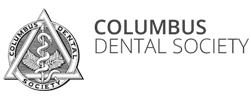Gum/Tissue Grafting
What is Gum Grafting?
Gum recession is a sure-fire sign of periodontal disease. As the gum line drops due, more of your teeth are exposed, this can drastically change the way a smile looks. When this happens, many people also feel that their teeth are more sensitive because more of the root is exposed.
Gum grafting raises the gum line to a more attractive level, which reduces how much tooth is exposed and improves the appearance of a smile. Aside from the aesthetic benefits of this procedure, repairing gum recession and other damage caused by periodontal disease is critical to a patient’s overall health. Since gum tissue is the primary defense against bacteria, inadequate gum tissue around the teeth can cause bacteria to grow rapidly and cause even more damage.
What is the Procedure for Gum Grafting?
Depending on your situation, your periodontist will recommend one of three gum grafting procedures: connective-tissue grafts, free gingival grafts, or pedicle grafts.
Free Gingival Grafts
Free gingival grafts are usually performed when patients have naturally thin gums. This procedure involves removing skin from a second surgical site. This site is usually the roof of the mouth or the maxillary tuberosity (the area behind the last top molar tooth). A piece of this skin is removed and connected to the recessed gums with sutures. The graft will fuse with the original gum as the surgical site heals and result in a higher gum line.
Connective-Tissue Grafts
Connective-tissue grafts are the most commonly performed of the three procedures. During a connective-tissue graft treatment, the periodontist creates a flap of skin on the roof of the mouth and obtains a piece of tissue from underneath it. The flap is stitched back together after the necessary is extracted. This tissue is then sewn to the gum tissue around the unprotected root. Again, as the site heals, the tissues will merge together and create a higher gum line.
Pedicle Grafts
For pedicle grafts, the periodontist will use tissue from the gum around or near the tooth that requires the graft. During the procedure, a flap is cut out in a way that leaves one side still attached to the gum. This flap is pulled over to cover the receded gum and stitched into place. This type of graft can only be used if the patient has enough gum tissue near the exposed root.

 Dr. Sakamoto
Dr. Sakamoto
 Dr. Mannava
Dr. Mannava
 Our Team
Our Team
 FIRST VISIT
FIRST VISIT
 PATIENT FORMS
PATIENT FORMS
 DENTAL INSURANCE
DENTAL INSURANCE
 POST-OP INSTRUCTIONS
POST-OP INSTRUCTIONS





